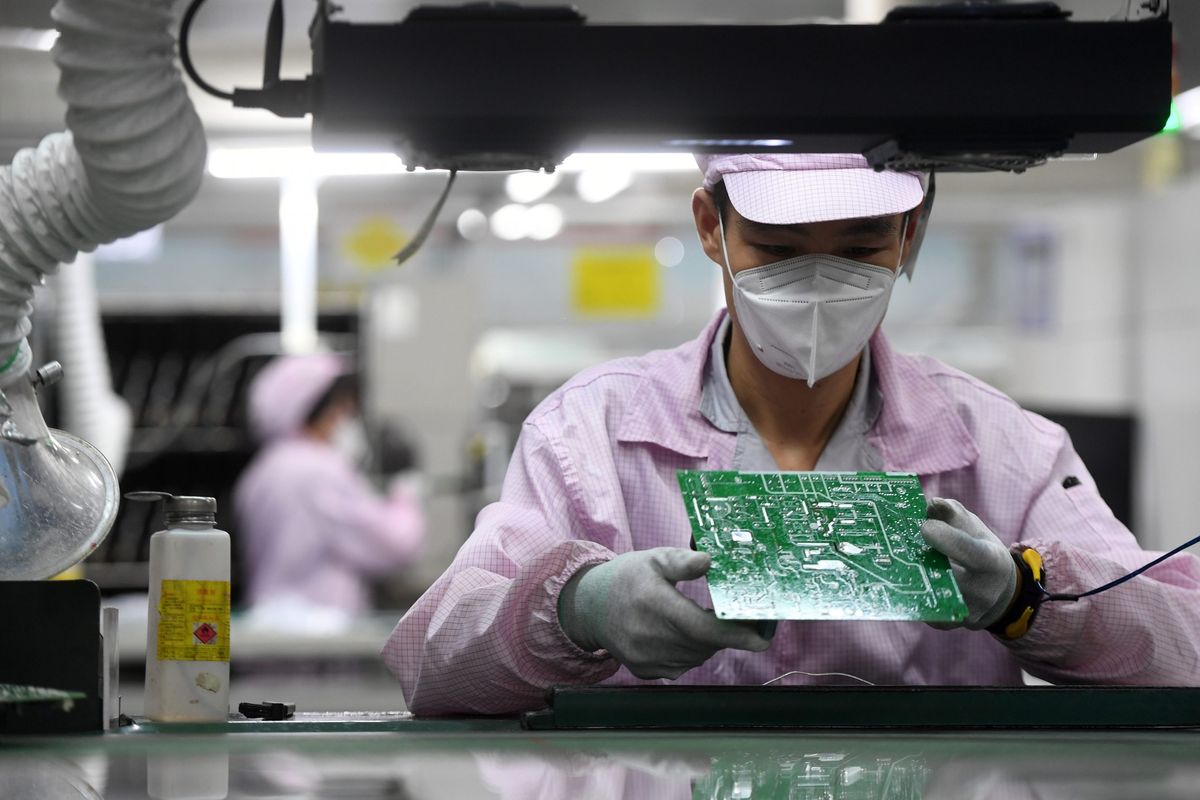The global supply chain has been disrupted. What does that mean, though?

A few minutes every morning is all you need.
Stay up to date on the world's Headlines and Human Stories. It's fun, it's factual, it's fluff-free.
Every day, millions of products are transferred between hundreds of countries and companies, but experts are currently expecting this supply chain to be disrupted in a way that may take years to normalize.
What is the global supply chain?
- The global supply chain refers to the people, roles and activities involved in producing goods and services and their supply and distribution across the entire world.
- Think of all the components of a computer. Many of these components require silicon to make them, and two-thirds of all silicon is produced in China.
- Since there are companies that receive silicon in the United States to assemble computers, this is one aspect of the global supply chain that exists.
- Every day, millions of products are transferred between hundreds of countries and companies, but experts are currently expecting this supply chain to be disrupted in a way that may take years to normalize.
How did the supply chain get disrupted?
- Well, the simple answer is that COVID-19 just kind of messed everything up.
- In a more complicated way, several things have contributed to this disruption. One of the main things is that the pandemic sent many people home during the lockdown, but everyone continued to use products and services during this period.
- Some of these people who went home due to the lockdown and social distancing guidelines included warehouse and factory workers who were essential to producing these goods and services for companies.
- With fewer around to actually continue making products and the demand not dropping, the total supply of products began to run dry.
- One of the best examples of this disruption occurred in March of last year when there was a disruption in the toilet paper industry.
- After many places issued stay-at-home orders for residents, toilet paper began to run out of stock.

What are the long-term effects of this disruption?
- A massive increase in consumer demand and disruptions to global shipping have created the most severe crisis in years for the supply chains that multinational companies have built their operations around.
- “We can’t get enough components, we can’t get containers, costs have been driven up tremendously,” said the chief executive officer of Hong Kong-based Musical Electronics Ltd., Christopher Tse. The company makes consumer products from Bluetooth speakers to Rubik’s Cubes.
- The problem isn’t just the shortages of products but the means to ship them, such as shipping containers.
- “Port congestion and a shortage of container shipping capacity may last into the fourth quarter or even mid-2022,” said Hsieh Huey-chuan, president of Taiwan-based Evergreen Marine Corp. “If the pandemic cannot be effectively contained, port congestion may become a new normal.”
- Despite all of these problems, some countries across Asia are rolling the dice and attempting to normalize these supply chain issues despite rising COVID-19 cases.
How is Southeast Asia handling this disruption?
- Nations across Southeast Asia are realizing that they can no longer afford the economy-crippling restrictions.
- Many people across Asia are growing weary of the many successful lockdowns as businesses in Singapore and the Philippines are becoming more vocal about difficulties in long-term planning due to the lack of certainty around government policies.
- As a result, various countries across Southeast Asia such as Malaysia, Indonesia and Thailand are emulating Singapore’s strategy to learn to “live with the virus” much like how most of the world “lives with” the flu.
- According to experts, it’s still a long time before tourism can get back to normal in Asia.
- “Any hope of a broad border reopening that can facilitate trade and tourism flow across various Asean countries is going to remain a distant pipe dream,” Oversea-Chinese Banking Corp. economist Wellian Wiranto.
What’s next?
- So apparently, it’s hard to say when the supply chain will normalize, but as of right now, everything is still a little out of whack.
- The current fear is that it won’t end in time for the busiest time of the year: Christmas.
- “I half-jokingly tell people ‘Order your Christmas presents now because otherwise on Christmas day, there may just be a picture of something that’s not coming until February or March,'" said Scott Price, the international president for shipping giant UPS.
- There hasn’t been much from the White House or the Chinese government regarding the current supply issues, but many investors are looking to further invest in supply chain solutions over the next couple of years.
- A Gartner survey that was recently conducted revealed, 87% of 1,300 supply chain professionals reported plans to invest in supply chain resiliency in the next two years.
- So, everyone knows there’s a problem and money will be poured into fixing it, but whether or not it is a problem that can be resolved soon has yet to be determined.
You drive the stories at TMS. DM us which headline you want us to explain, or email us at tips@themilsource.com







Comments ()